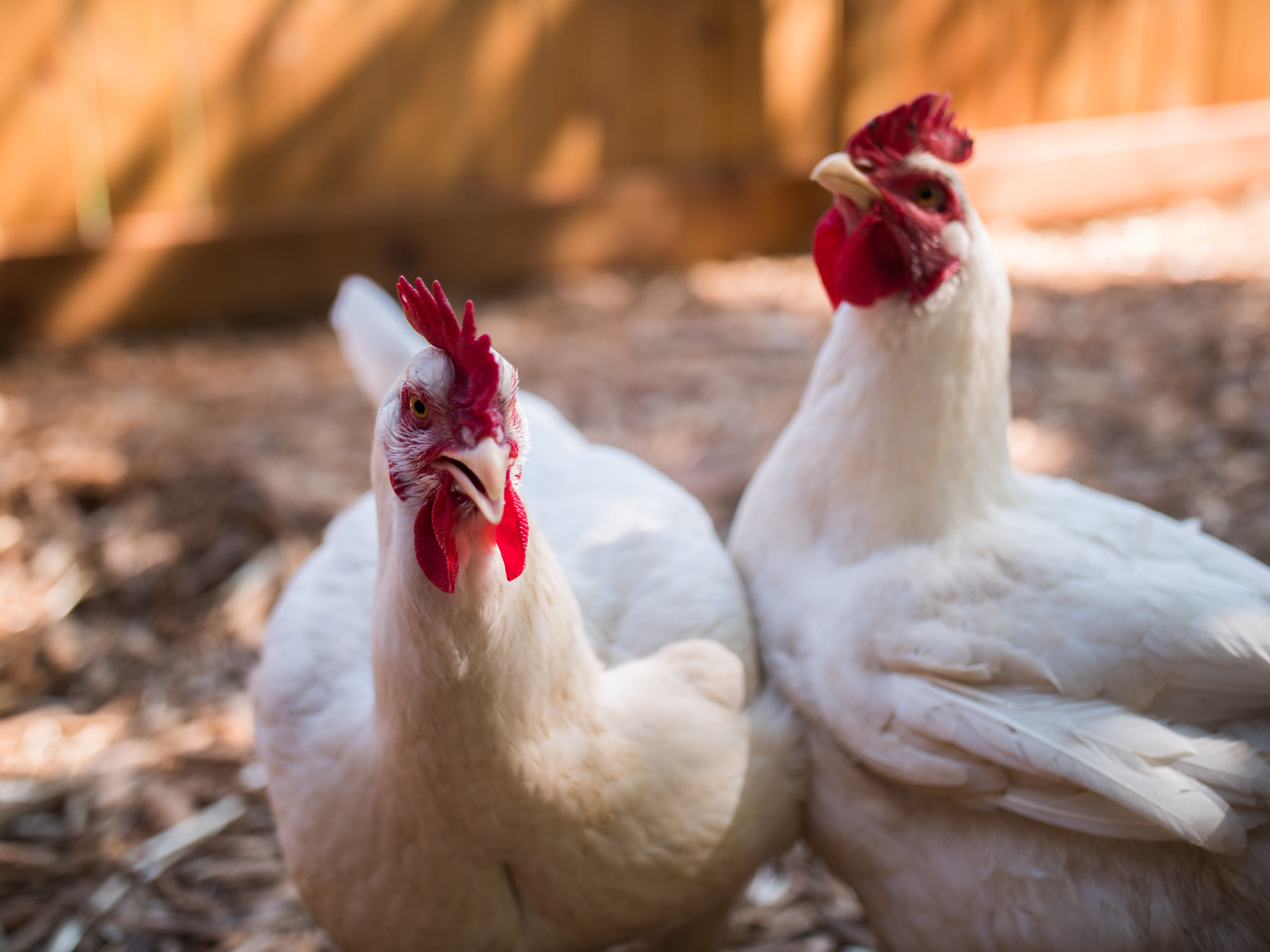




A new report reveals that top restaurants all over the world—including McDonald’s, Subway, and Outback Steakhouse—are falling behind on animal welfare.

As more consumers demand higher animal welfare standards when they go out to eat, more restaurants are getting the message—and leaving cages behind. But some of the world’s biggest restaurants refuse to see the writing on the wall.
Around the world, thousands of forward-thinking corporations have already committed to ending their use of brutal cages. Thanks to the advocacy of the Open Wing Alliance (OWA), a global coalition of animal protection groups, well over 2,000 companies have published corporate welfare policies to go cage-free. The vast majority of these companies have completely fulfilled—or are actively sharing reports on—their promises, and more than 100 have committed to go cage-free across their global supply chains.
In short, the progress is real: millions of egg-laying hens around the world have already been freed from one of the cruelest forms of confinement. A cage-free future is coming.
But a number of industry heavyweights are still holding out. Here’s why this is a problem.
What’s wrong with battery cages?
Approximately 7.5 billion hens lay billions of eggs each year, supplying restaurants, supermarkets, and hotels around the world. The vast majority of these birds—roughly 90%—live in barren wire crates called “battery cages.” Designed to maximize the number of hens that can fit on a factory farm floor, battery cages can hold as many as ten chickens in a space the size of a cabinet drawer, leaving less than a single square foot for each hen to occupy. These birds can’t stand up straight or spread their wings without hitting the walls, the ceiling, or a fellow chicken. Each one will lay hundreds of eggs per year in these excruciating conditions, which aren’t just cramped and overcrowded but also dim, noisy, and filthy. Some hens die in confinement, and their bodies are left to rot beneath the feet of their companions. In short, life in a battery cage is sheer agony.
Which restaurant chains are moving towards cage-free eggs?
Laid by hens who don’t live in battery cages, cage-free eggs are quickly becoming an industry standard. Over 2,000 companies have publicly committed to going cage-free. The list includes household names like Burger King, Krispy Kreme, Starbucks, Cinnabon, and Chipotle.
When major restaurants commit to global policies in particular—and follow through—the impact is staggering. A global—rather than regional—policy affects every chicken in a company’s supply chain across all its operations around the world. For example, in September 2021, Yum! Brands—the parent company behind Kentucky Fried Chicken (KFC), Pizza Hut, Taco Bell, and The Habit Burger Grill—pledged to transition to 100% cage-free eggs across at least 25,000 of its locations. As the world’s largest restaurant chain, the sheer magnitude of its cage-free transformation stands to improve the lives of millions of chickens.
Which restaurant chains are not moving towards cage-free eggs?
A number of restaurants are falling far behind on animal welfare, refusing to wake up to the paradigm shift that’s already begun to sweep across the food sector.
These companies are underperforming:
- Olive Garden
- Subway
- Denny’s
- Domino’s Pizza
- Five Guys
- Wendy’s
- Outback Steakhouse
- Chili’s Grill & Bar
- Carl’s Jr
- McDonald’s
- Chick-fil-A
- Dairy Queen
- Ruth’s Chris Steak House
Some of these companies have made limited commitments in specific regions. But without comprehensive, global commitments, the animals in their supply chains and the customers at their restaurants face drastically uneven treatment depending on their location. Subway, for example, has introduced cage-free policies throughout the Global North. But because Subway lacks a global commitment to animal welfare, its chickens in the Global South endure brutal living conditions, and its customers in these regions aren’t served food that meets higher standards of welfare.
Battery cages, cage-free, and free-range: what’s the difference?
Battery cages are one of the worst forms of confinement within industrial animal agriculture.
In cage-free environments, egg-laying hens are no longer confined to cruel battery cages. Although they remain locked in small enclosures, they have access to more space, sometimes even including a place to perch above the ground. While battery cages frustrate the natural behaviors of hens—from dust-bathing to nesting—cage-free housing allows them to engage in these activities, dramatically improving their quality of life.
Free-range environments go further than cage-free environments by providing birds with some access to the outdoors, though the amount of outdoor space can vary significantly from farm to farm.
As long as industrial agriculture remains a driving force within our food system, it’s crucial to demand better for the animals who remain trapped on factory farms. The road towards ending the abuse of animals raised for food is long—but eliminating battery cages is an important step. Not just because it relieves a massive amount of suffering but also because it lays the foundations for more powerful revolutions in animal welfare to come.
What you can do
Diners have the power to convince corporations to adopt cage-free practices that release hens from battery cages: one of the cruelest forms of confinement. Momentum is building around the world to demand better for chickens, and forward-thinking companies are signing onto the movement. Together, we can push the rest to join us in ending the abuse of animals.







